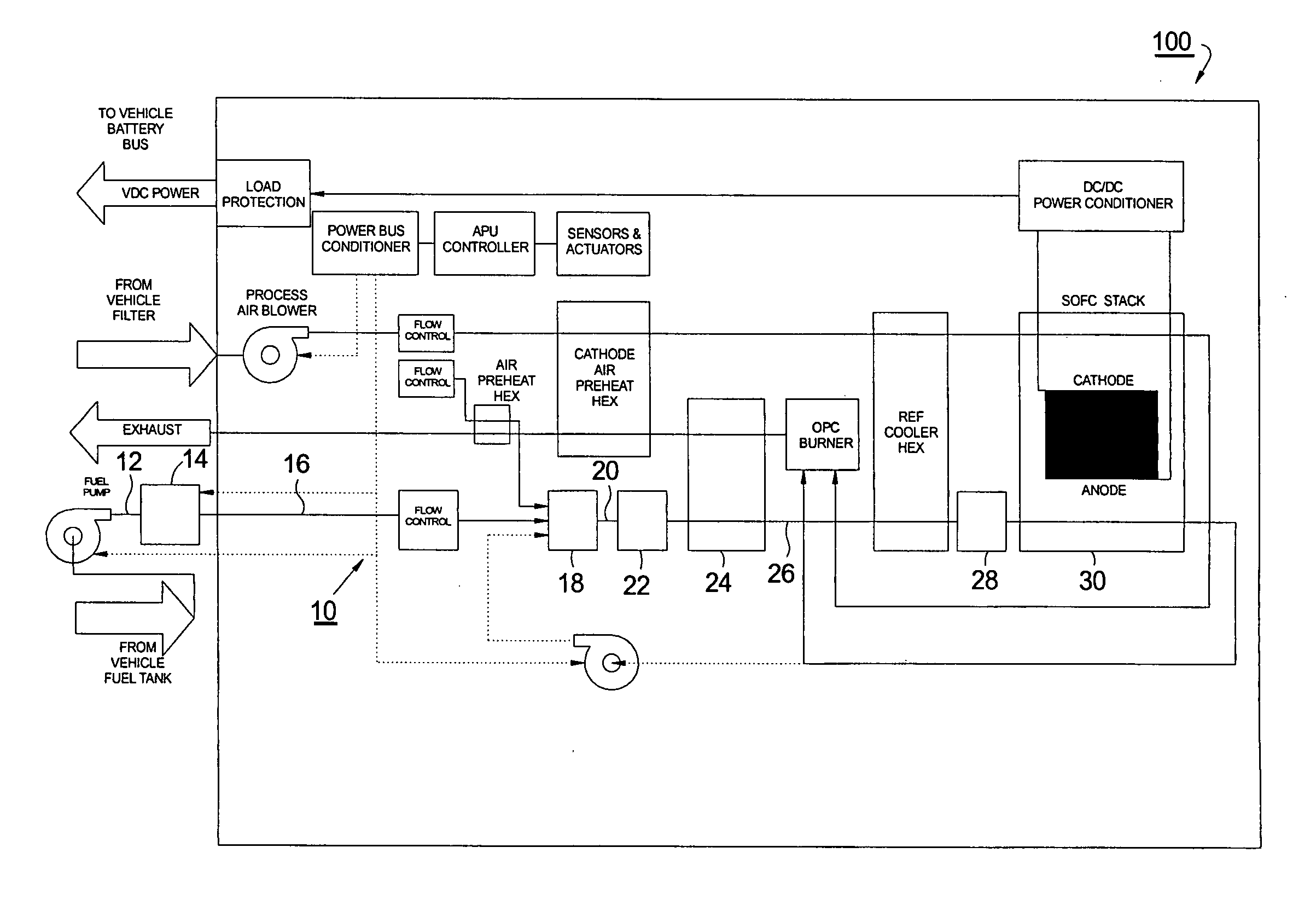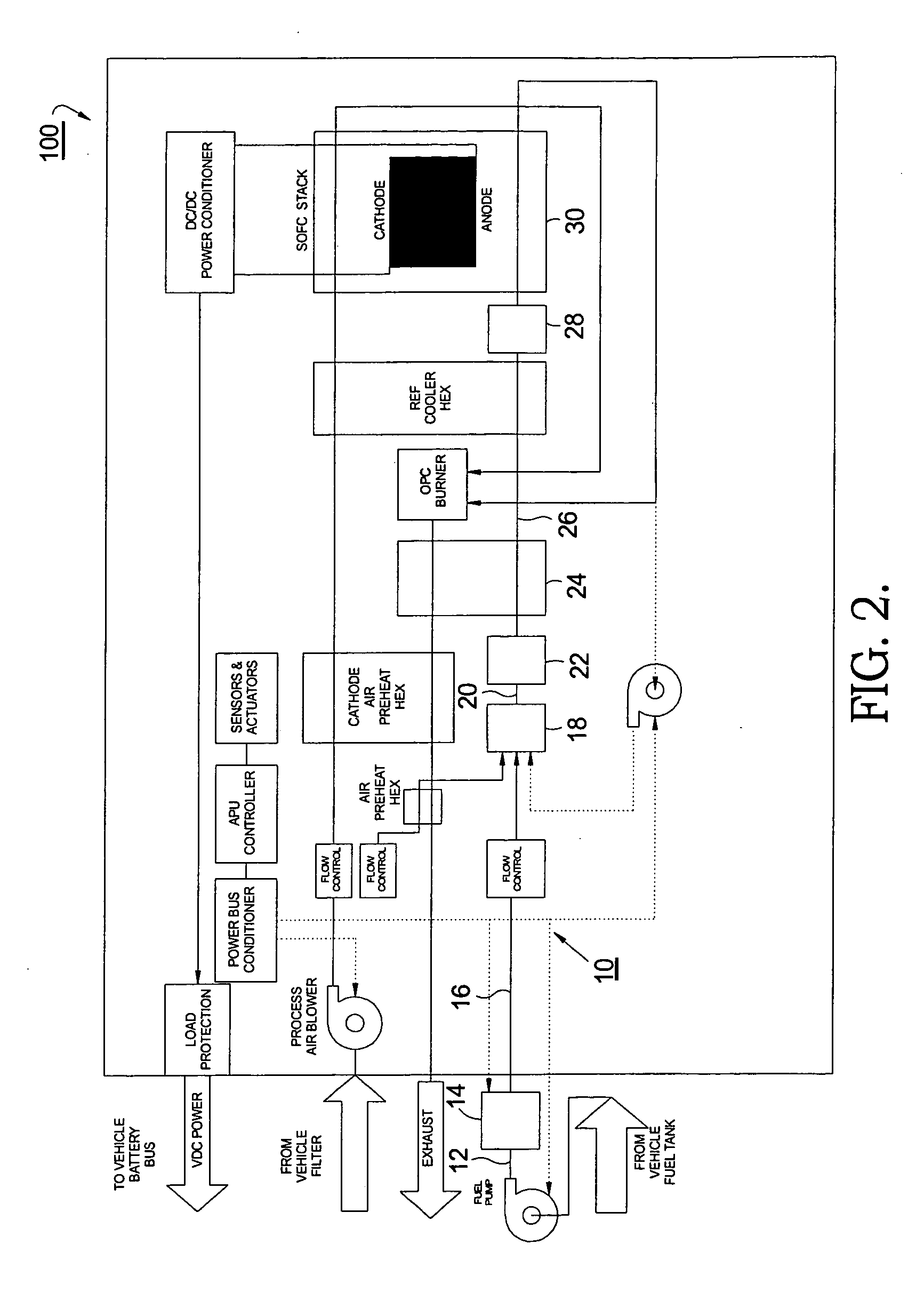Method and apparatus for desulfurization of fuels
a technology of desulfurization and fuel, which is applied in the direction of solvent extraction, electrochemical generator, separation process, etc., can solve the problems of environmental pollution, reduced catalyst activity, and reduced life of metallic parts
- Summary
- Abstract
- Description
- Claims
- Application Information
AI Technical Summary
Benefits of technology
Problems solved by technology
Method used
Image
Examples
Embodiment Construction
[0021] In a fuel desulfurizing process in accordance with the invention, liquid phase desulfurizing of sulfur-containing hydrocarbon fuel is combined with gas phase desulfurizing of partially desulfurized and vaporized fuel to yield a gas phase fuel suitable for reforming and a reformate suitable for use in an SOFC stack.
[0022] Referring to FIG. 1, in a schematic flow diagram of a desulfurizing system 10 in accordance with the invention, a flow 12 of sulfur-containing hydrocarbon fuel is passed first through a low-temperature, liquid-phase desulfurizer 14, for example, a copper-, silver-, cerium-ion exchanged zeolite sorbent with an alumina guard bed for removing large refractory sulfur-containing compounds in the liquid fuel. Such a zeolite is operative over a temperature range between about 0° C. and about 120° C. Partially desulfurized fuel 16 is then vaporized in a Fuel Delivery Unit (FDU) 18 in the presence of, for example, air and anode tail gas recycle, to form a gaseous fue...
PUM
| Property | Measurement | Unit |
|---|---|---|
| temperature | aaaaa | aaaaa |
| temperature | aaaaa | aaaaa |
| temperature | aaaaa | aaaaa |
Abstract
Description
Claims
Application Information
 Login to View More
Login to View More - R&D
- Intellectual Property
- Life Sciences
- Materials
- Tech Scout
- Unparalleled Data Quality
- Higher Quality Content
- 60% Fewer Hallucinations
Browse by: Latest US Patents, China's latest patents, Technical Efficacy Thesaurus, Application Domain, Technology Topic, Popular Technical Reports.
© 2025 PatSnap. All rights reserved.Legal|Privacy policy|Modern Slavery Act Transparency Statement|Sitemap|About US| Contact US: help@patsnap.com



